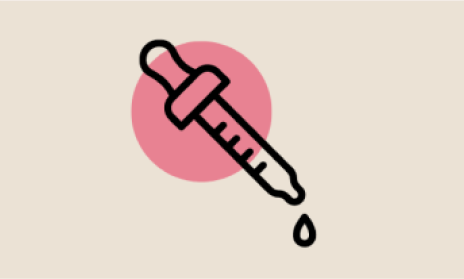Proper use counseling
Get FREE tools and resources to help parents and caregivers use TYLENOL® and MOTRIN® products safely

Active ingredients
30% of US parents have low health literacy and are at increased risk of making errors administering medicine.1
Because many prescription and OTC medicine brands contain the same active ingredient in TYLENOL® (acetaminophen), and many contain the same active ingredient in MOTRIN® (ibuprofen), it is important to counsel parents and caregivers on the differences and instruct them to only administer ONE medicine with the same active ingredient at a time.
*When used as directed.
†Maximum strength lidocaine without a prescription.
Dosing
Unintentional medication overdoses among children under age 5 account for approximately 35,000 emergency room visits each year. 5% of ER visits for unintentional overdoses among children under age 5 are the result of medication errors, such as giving too much medicine by mistake.2
In addition to counseling parents and caregivers to carefully read medication labels, help ensure safe dosing of infants’ and children’s TYLENOL® and MOTRIN® products by reinforcing that they should:
Always dose according to their child’s weight as directed on the product label
Always use the dosing device included with the medication to help ensure an accurate dose
Explore FREE safe dosing resources you can download and share with parents.
*When used as directed.
†Maximum strength lidocaine without a prescription.
Administration
Proper administration can be challenging for parents and caregivers, especially those with infants or toddlers.
As you know, it is strongly recommended that parents and caregivers consult their pediatrician before administering any medication to a child under 2 years old.
When administering OTC oral suspensions or liquids to an infant using a dosing syringe, it is recommended that the baby be held or seated in an upright position to avoid choking. After accurately measuring the dose using the dosing syringe included with the medicine, parents or caregivers should gently squirt it between the child’s tongue and the side of the mouth, not the back of the throat. 3
All infants’ and children’s TYLENOL® and MOTRIN® oral suspensions and liquid formulations include a dosing cup or syringe to help parents and caregivers accurately and confidently administer the correct dose.
*When used as directed.
†Maximum strength lidocaine without a prescription.
Drug labels
You may have adolescent patients who are beginning to use OTC medications on their own. But only 54% of tweens know that OTC medicine can be harmful when misused.4
Consider educating tween and teen patients about the importance of reading and understanding drug labels, with special focus on:
Active ingredient(s)
Uses
Warnings
Directions
Find FREE information and resources to share with parents, caregivers, and older pediatric patients at GetReliefResponsibly.com.
*When used as directed.
†Maximum strength lidocaine without a prescription.

Pediatric products and dosing
Find information and dosing charts for all TYLENOL®, TYLENOL® Cold & Flu, and MOTRIN® infants’ and children’s products

Dose medicine safely
Give caregivers the information they need with this helpful handout

FREE monthly BundleBoxes
Get FREE samples, resources, and coupons from 11 pediatric brands.
*When used as directed.
†Maximum strength lidocaine without a prescription.
References
1. Shonna Yin H, Neuspiel DR, Paul IM. Preventing Home Medication Administration Errors. American Academy of Pediatrics. December 1, 2021. Accessed August 21, 2023. https://publications.aap.org/pediatrics/article/148/6/e2021054666/183379/PreventingHome-Medication-Administration-Errors?autologincheck=redirected
2. PROTECT Initiative: Advancing Children’s Medication Safety. Centers for Disease Control and Prevention. Accessed August 21, 2023. https://www.cdc.gov/medicationsafety/protect/protect_initiative.html
3. How to use liquid medicines for children. healthychildren.org. Accessed September 7, 2023. https://www.healthychildren.org/English/safety-prevention/at-home/medicationsafety/Pages/Using-LiquidMedicines.aspx#:~:text=Don't%20put%20the%20medicine,best%20dosing%20tool%20to %20use
4. Teach tweens & teens about medicine safety. Get Relief Responsibly. Accessed August 21, 2023. https://www.getreliefresponsibly.com/teen-medication-safety